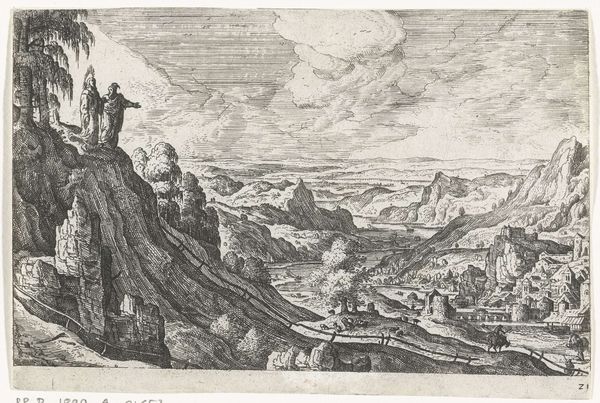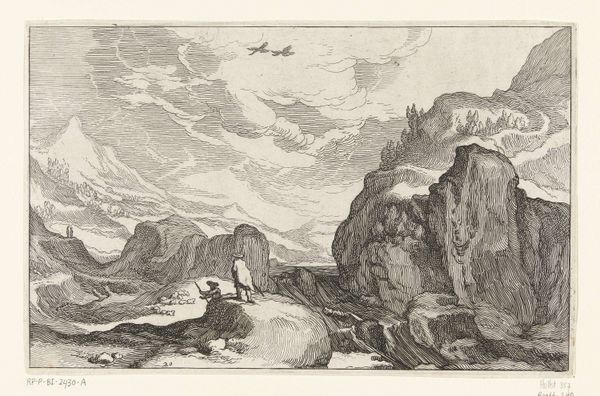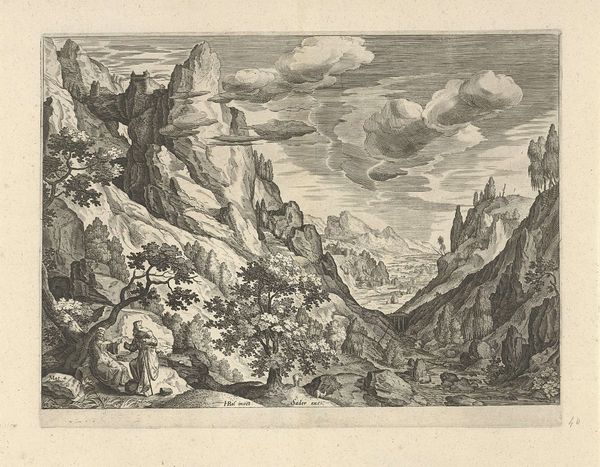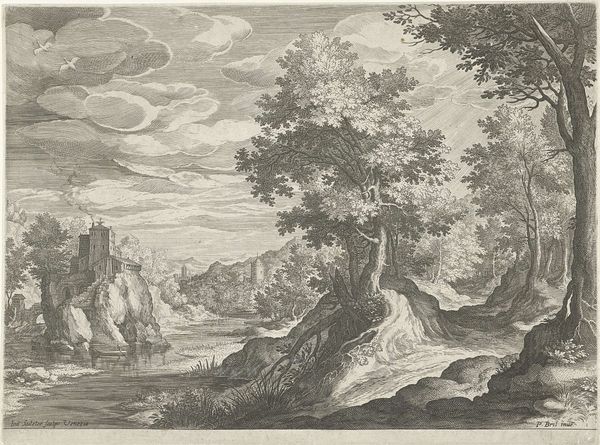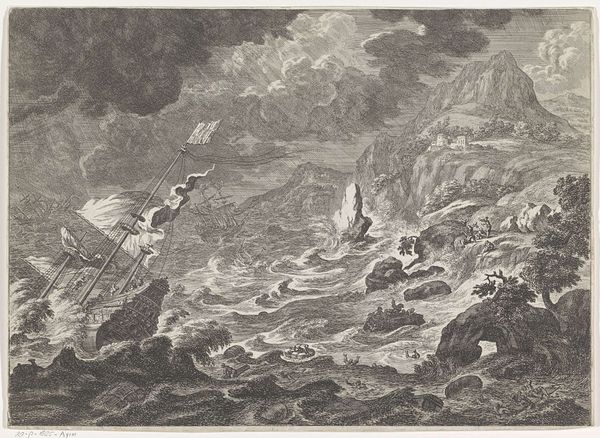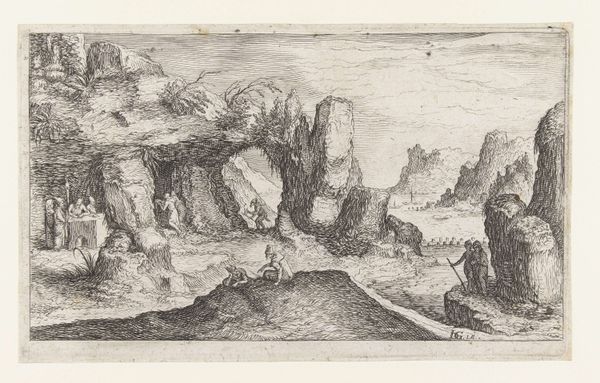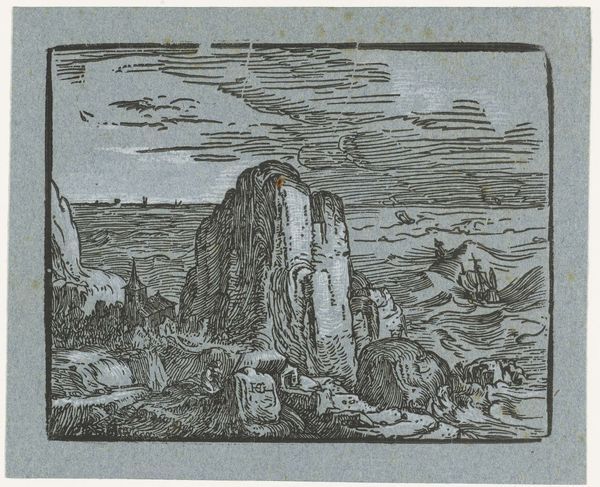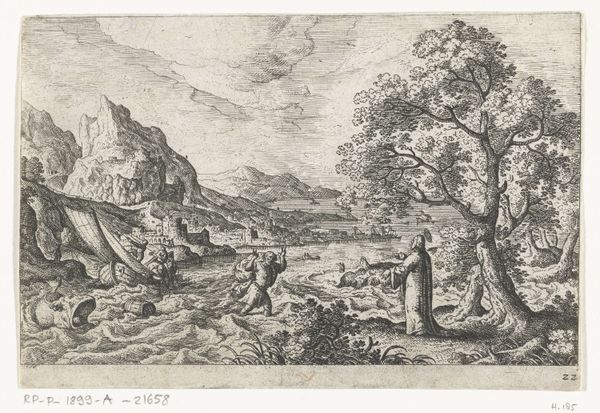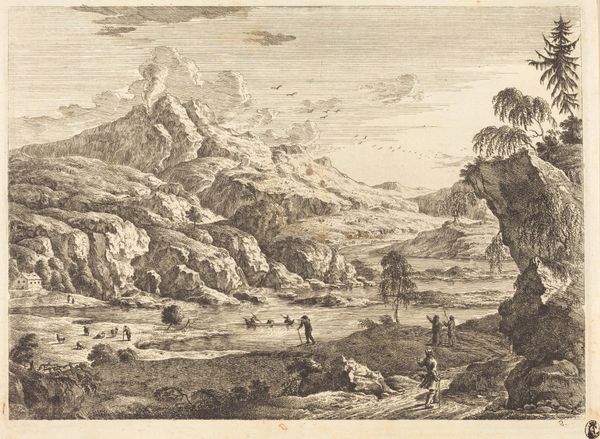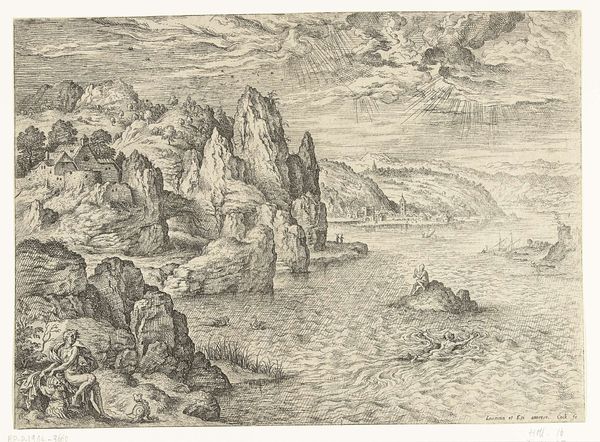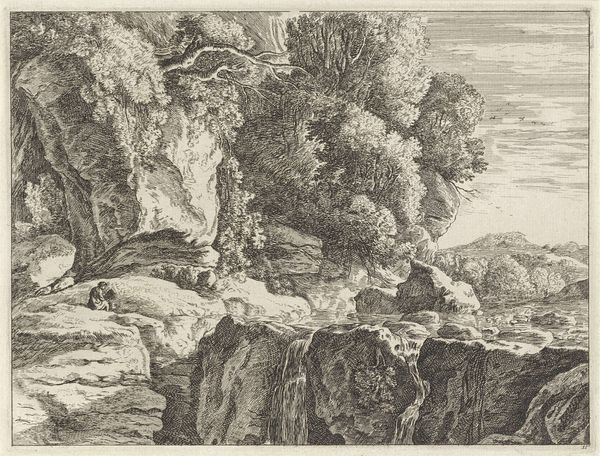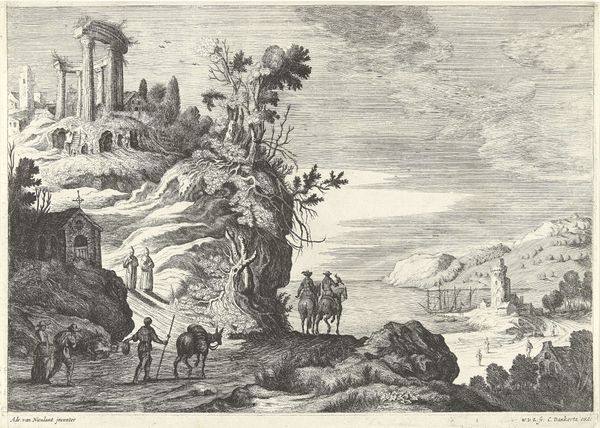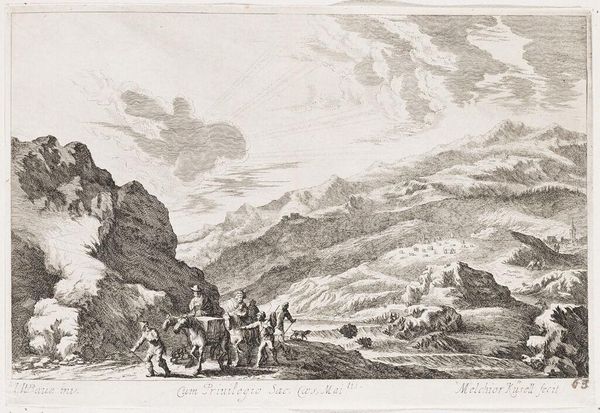
print, etching
#
narrative-art
# print
#
etching
#
landscape
#
etching
#
northern-renaissance
Dimensions: height 122 mm, width 185 mm
Copyright: Rijks Museum: Open Domain
Editor: This etching, "Ontmoeting op weg," dating from roughly 1550 to 1650 and attributed to an anonymous artist, presents a striking landscape. I’m really struck by the dramatic contrast between the dark, heavily etched foreground and the lighter, more open background. What do you see in this piece? Curator: The power of this piece, to me, resides in understanding its position within the social and cultural history of printmaking. Prints like this weren't just art; they were a vital medium for disseminating information and ideas. Think about how access to images was democratized. Did this impact artistic expression in other mediums at the time, do you think? Editor: That's fascinating. I hadn't considered that prints could be tools for disseminating information in a world without photography. So, were these landscape prints just decorative, or did they have some deeper socio-political purpose? Curator: Landscapes during this period often served as vehicles for allegorical or moralizing narratives, commenting on societal order or human virtue, especially under repressive regimes. Even without knowing a specific narrative, what feelings about society might the open, expansive landscape evoke for viewers of that era, compared to our own? Editor: I see your point! The openness might have offered a sense of possibility in a restrictive world. This has broadened my view beyond the image itself and made me think about how and for whom the artist created. Curator: Exactly. Art's role in public discourse is ever-evolving. Considering art's potential impact on social consciousness adds layers of meaning to every piece. Editor: I completely agree. Seeing this landscape as a form of visual communication gives it an entirely new dimension. Thanks!
Comments
No comments
Be the first to comment and join the conversation on the ultimate creative platform.
